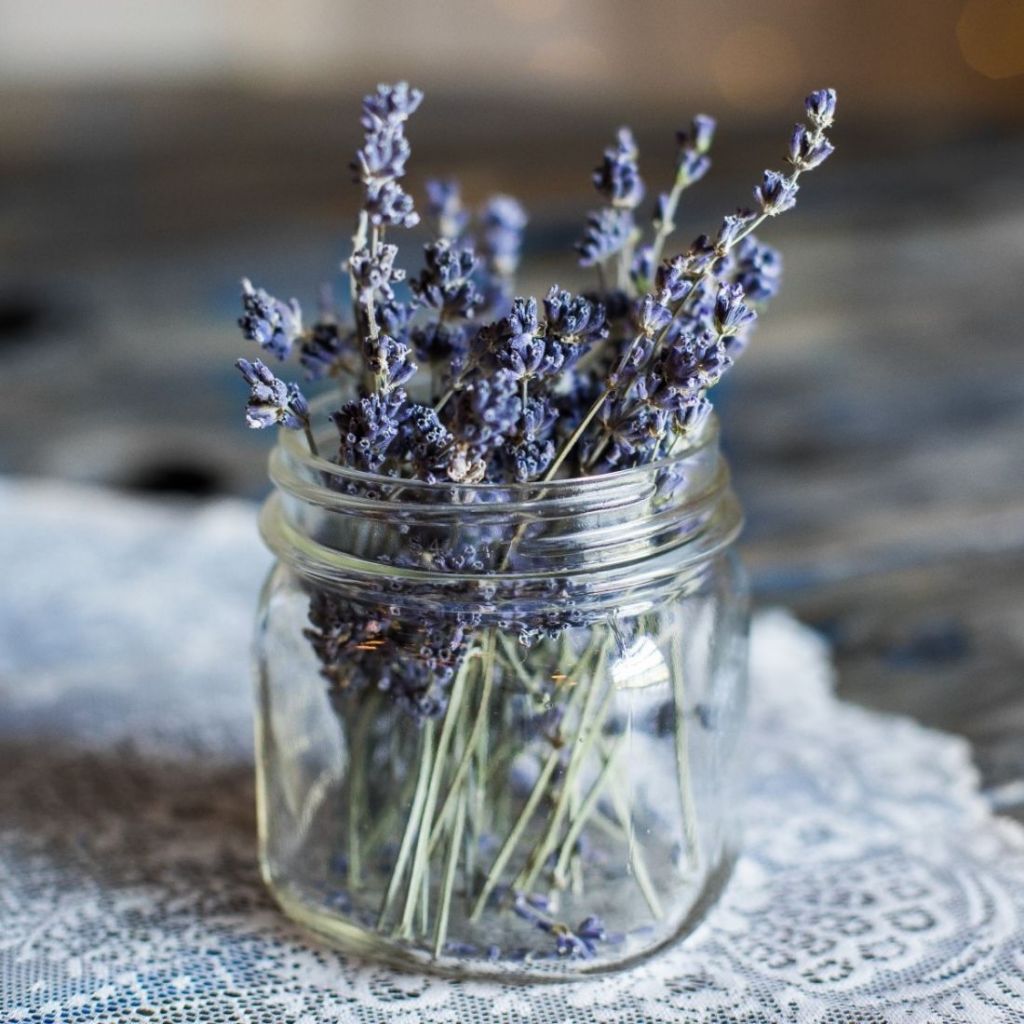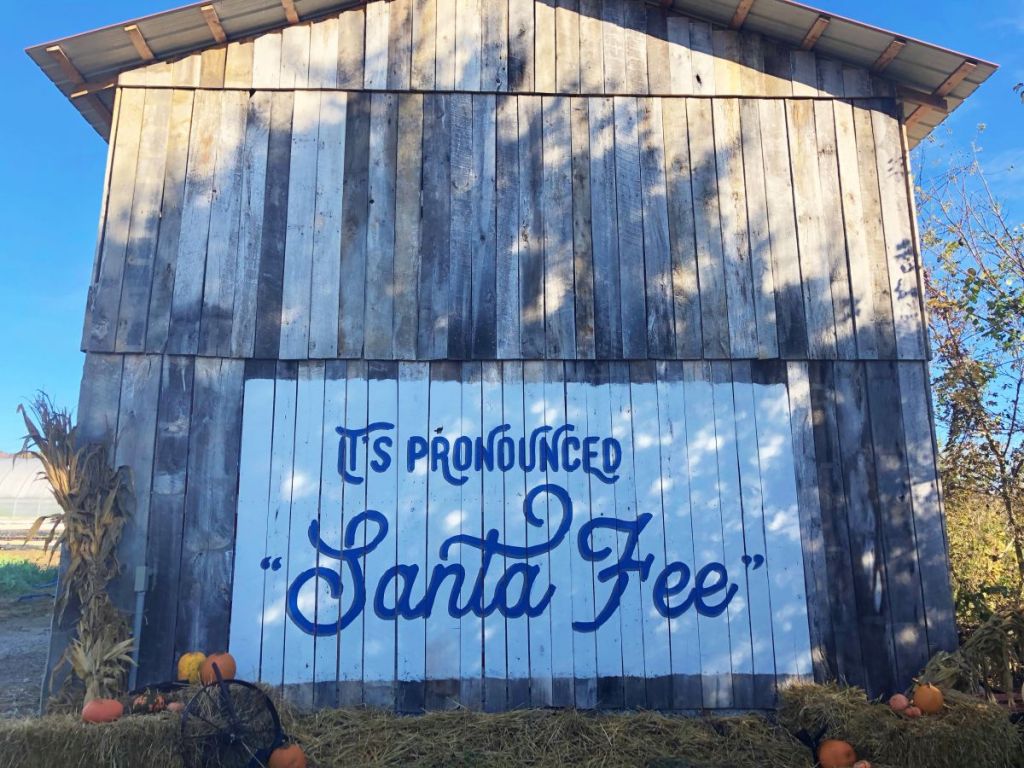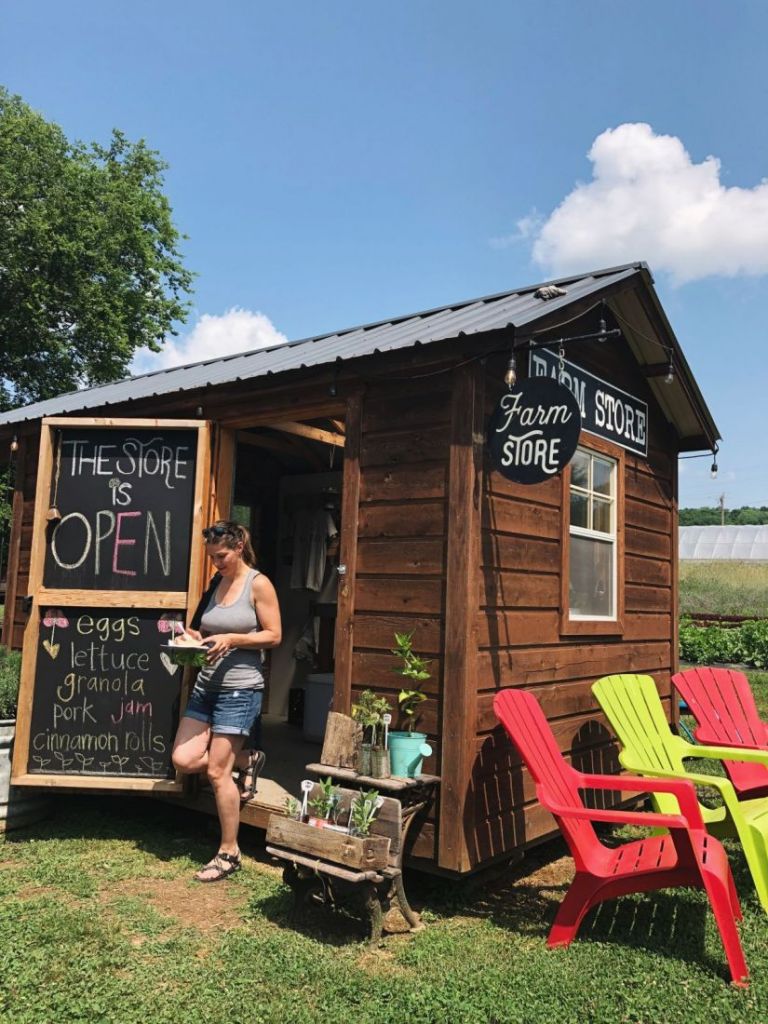One night, I sent a batch of my husband’s homemade kimchi, a steaming hot loaf of bread, and some essential oils home with a neighbor whose daughter had just injured her finger in a car door. Our neighbor, his wife, and their two kids live down the road in our little town of Santa Fe, Tennessee, a rural community outside of Nashville.
When he arrived at the door that evening to retrieve the essential oils I’d offered them, he handed me a jar of herbs and wildflowers from his wife’s garden that she’d sent along for me. I froze for a moment, because I was honestly caught off guard to receive a gift when they were the ones with the hurt child at home. Yet, it was true—because that’s just the way things are here.
When our family left Dallas to move to middle Tennessee a few years ago, we left our urban neighborhood in Oak Cliff, historic home of nine years, and all our favorite walking routes on sidewalks that weaved in and out of tree-lined streets. We also said a bittersweet goodbye to our dear group of friends who had keys to that home and had worn steps into the wooden threshold as we welcomed them through our door so many times to share a meal, celebrate a birthday, or just hang out on a Sunday evening.
But it was time for us to move on, and I was excited to return to the Nashville area where I had gone to college and still had a few close friendships. We left Texas in pursuit of opportunity, possibility, rolling hills, and four seasons.

We talked about having our own farm one day, and when it actually became a reality shortly after we moved to Tennessee, I resisted it wholeheartedly, fearing the potential remoteness of living in the country and its high contrast to city life. The one big thing I was worried about was feeling isolated. What would I do without sidewalks? Where would my kids learn to ride a bike? Would anyone ever come to our house? Would we have a close community again?
It wasn’t pretty at first. I sat on the front porch, staring at the empty 50-mph road outside our front door, pining away so much for the walks we used to take around our old neighborhood that it actually hurt. But with a little patience, openness, and effort, I started to see that connection with people was closer than I thought.
Now, three years later, the realities of living here have turned out to be the complete opposite of my fears. I’ve learned that it’s okay to change my life and that sometimes there are unexpected gifts waiting on the other side.
You might have perceptions—just like I did—of what rural life is like: you can go days without seeing anyone, it’s too quiet, there’s a lack of culture/diversity. And while that can definitely be true, I’ve found it has less to do with the environment and more to do with perspective.
Here are a few things that have turned out differently than I expected:
Neighborliness. Funny enough, it was through Instagram on our barely-there internet connection that helped me find some local neighbors at first, like the ones who brought over the herbs and wildflowers. It didn’t take long to realize that people here: a) often stop by unannounced, and b) are more happily available. Shortly after we arrived, we were kindly informed that “it’s pronounced Santa Fee” (a phrase which is now painted on a mural on the side of our barn) so we didn’t sound silly at the post office when locals asked where we live.

And then, a family with teenagers whose land borders ours just showed up on our doorstep one afternoon to introduce themselves. They’ve since become good friends, sharing a pot of morning coffee or sending goodies back and forth on paper plates.
One stormy afternoon, a neighbor we hadn’t met before knocked on the door to let us know that four colossal pigs had escaped and were crossing the road in front of our house, and were they ours? They were. He’d already rounded them up, by the way, and they were standing at the back door, staring sheepishly up at me.
We’ve had neighbors trap the raccoon that killed our kittens, deliver s’mores bars to our front door, share homemade venison sausage, deck our dinner table with flowers, help us plant lettuce, and babysit our children. Mr. Gary beeps and waves every time he drives past our farmhouse in his 1950 Chevy truck and pulls in the driveway so our kids can sit on its worn velvet seats. Jim and Sandy across the street always offer for us to play in their magical creek whenever we want without asking, and they really mean it. And they recently paved their long, winding driveway along the creek and invited my girls to ride bikes on it. Seriously?! I didn’t see that one coming.
In turn, we’ve had the opportunity to invite neighbors over for an impromptu meal, deliver food to a farming family who had a new baby, help replace tractor tires and tear down an old barn, and return a neighbor’s escapee horses who were happily munching the grass in our front yard one afternoon. (We fed them an entire bag of carrots so they wouldn’t move on to our lettuce rows next.) This give-and-take seems to happen naturally, without hidden agendas or expectations.
Diversity. There may not be a lot of cultural diversity where we live, but there’s definitely diversity. We have a ukulele-playing grandpa, photographers of all different styles, an architect, a chef, a farmer who also works for an African women’s health organization, woodworkers, mule trainers, musicians, baristas, and artists. These folks with all different talents and passions also have diverse spiritual and political perspectives, family backgrounds, and life stories that make our community richer.
Gathering. And my worries about whether our friends would visit us out here? Perhaps it’s partly the novelty of farm life, but we’ve had more people of all ages visiting us since we moved to the country than we ever did in a city of 1.3 million people. Our guest room has been a revolving door of friends old and new who are desperate for quiet and space and want to get their hands dirty, too. Honestly, that one bar of cell phone reception has kind of been a blessing—people who come here really don’t have any other choice but to put down their phones and connect with the real, flesh-and-blood faces in front of them.

Hospitality and gathering people around the table is as important to us as it was before. Now we get to host large groups of people at our seasonal Kindred Dinners and connect with smaller groups of neighbors and customers every Saturday morning at our farm store. Several times a month, we invite old and new friends over to have a Korean food feast, hike around our land, or spend hours around a campfire in the backyard with nowhere to be, drinking wine while our kids play nearby.
But don’t worry, I’m not suggesting we all have to move to the country to feel more connected to our community. Ultimately, it’s not about where we live, but how. Whether it’s 6 feet away in a city apartment or miles down the road, we can all choose to live less insularly, more available, more giving than taking. All it takes is a willing heart to open up ourselves, and open up the door—jar of wildflowers not required.
• Listen to the podcast episode about this post.



